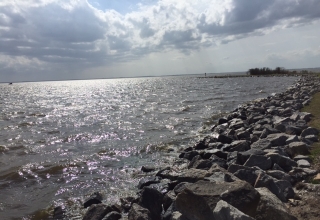
The shape of a target (intentions) can also be modified. What if a program is designed to bring together urbanites from New York City with members of a primitive tribe in Papua? Instead, the program can be directed toward teaching a new set of leadership skills not to adults but instead to five-year-old children. Finally, the shape of possible solutions (ideas) can be altered. The solutions can be absolutely “silly” or absurd. They can be absolutely unattainable or require massive financial outlays (or require no money at all).
Each of these changes in shape can not only open up previously neglected ideas but also surface previously untested assumptions (“What would be the benefits of offering this program to one person or many people at the same time?” “Why not bridge the big gap across cultures. What are the fundamental truths about human beings?” “Could we make this program so accessible and user friendly that it could work with children?” The challenges faced when doing Morphological Analysis are particularly appropriate when misinformation and untested assumptions are alive and well. By pushing the boundaries, we are more likely to surface what is and is not real about our world.
One final point. It is often even more important to ensure that those engaging in these divergent processes do themselves represent a diversity of perspectives and experiences. We are reminded of the founding work done by the Synectic’s group that not only offered some very powerful divergent processes (related to something called “spectrum analysis”) but also typically invited in people from many departments in an organization to work on a specific problem.
Convergence: when we have sown many seeds (ideas) in a problem-solving venture, it is time to find out which seeds yield a healthy outgrowth. We can do this by allowing multiple projects to be engaged, and then determine which work and which don’t work. We can take a somewhat more realistic step by setting up several limited “pilot tests” that enable us to see how a particular idea plays out without devoting significant resources to these pilot efforts. Usually, we don’t have the luxury of engaging this “survival of the fittest” strategy (even if restricted to pilot tests). This is especially the case in a polarized setting where each side is waiting for the failure of the other side. Instead, we must make the difficult decision(s) to select one of the ideas or to combine several of the ideas and begin planning for their implementation.
We can evaluate an idea by returning to the domains of information and intentions. The questions to be asked are rather straightforward. With regard to the domain of information we can ask: “Does this idea fit with what we know about the real world in which this idea would be implemented?” The domain of intentions is added with an answer to the following question: “To what extent is this idea, if implemented, likely to move us toward one or more of the desired outcomes on our target?” If we have done a good job with our domains of information and intentions, the answers to these questions are likely to be forthcoming and valuable. The causal/resource analysis will also provide some of the answers when we begin to converge on a specific idea: “How does this idea relate to what we know about past attempts (successful or unsuccessful) to address similar problems in our own organization or in other comparable organizations?”



















